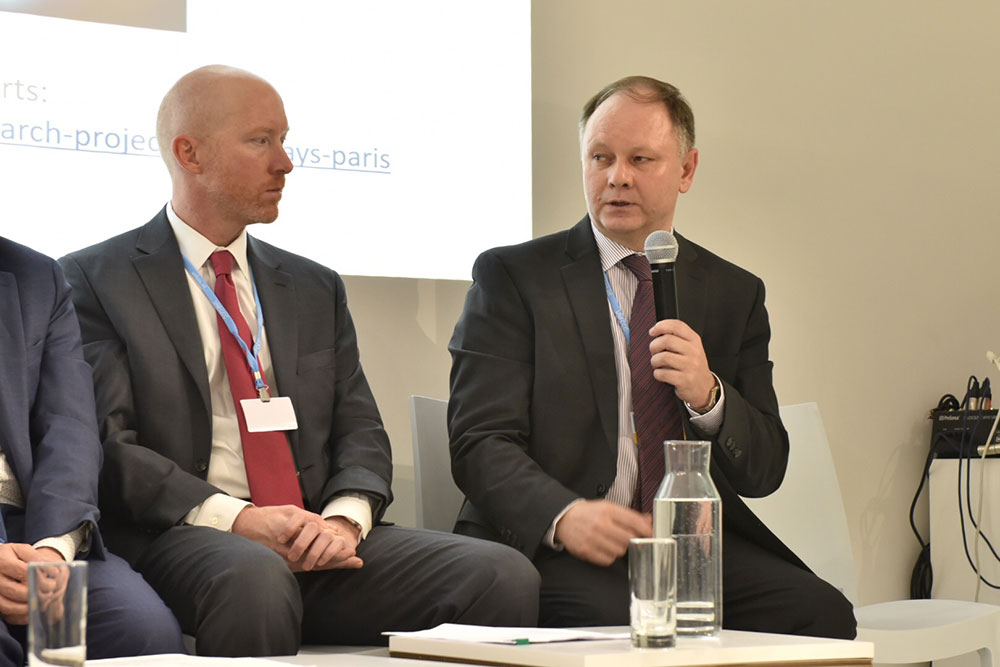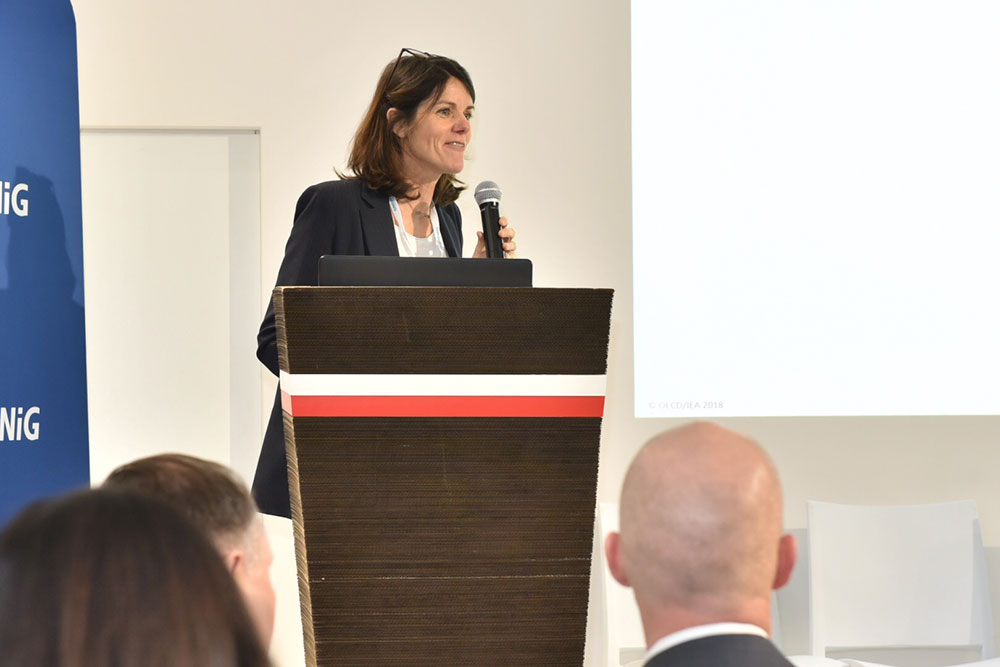
DECEMBER 10, 2018—Now convening in Katowice, Poland amid dire warnings from the IPCC Special Report on Global Warming of 1.5ºC and the National Climate Assessment about the pace of climate change and severity of its impacts, the 24th Conference of the Parties (COP24) to the United Nations Framework Convention on Climate Change (UNFCCC) aims to get the world on track to keep global warming well below two degrees Celsius (2ºC). To that end, negotiators from the nearly 200 signatory nations in the Paris Agreement are expected this week to report on their progress in meeting initial greenhouse gas emissions reduction targets, or Nationally Determined Contributions (NDCs), for 2025-2030, and to identify pathways to achieving more ambitious NDCs.
In support of this global effort, a team of researchers at the MIT Joint Program on the Science and Policy of Global Change, MIT Energy Initiative and MIT Center for Energy and Environmental Policy Research (CEEPR) has developed modeling tools to evaluate the climate progress and potential of two major world regions: Southeast Asia and Latin America. In consultation with GE and regional partners, the team analyzed gaps between current emission levels and NDC targets within each region, highlighted key challenges to compliance with those targets, and recommended cost-effective policy and technology solutions aimed at overcoming those challenges.
The results appear in two “Pathways to Paris” reports released today—one for the ten-member Association of Southeast Asian Nations (ASEAN), the other for selected countries in Latin America (LAM). Executive summaries for both reports are available here.
The research team chose to study the two regions because they represent vastly different starting points on the road to emissions reduction, and thus cover a wide range of technology and policy options for meeting or exceeding current NDCs.
“Whereas Southeast Asia relies heavily on fossil fuels, particularly coal, to produce energy, Latin America, which has embraced hydropower, is already on a far less carbon-intensive emissions path,” says Sergey Paltsev, a deputy director at the Joint Program and senior research scientist at the MIT Energy Initiative, and lead author of both reports. “These regions have not received as much attention as the largest emitting countries by most gap analysis studies, which tend to focus on the globe as a whole.”

Rob McKeel, Vice President and Chief Marketing Officer at GE Power, and Sergey Paltsev, senior researcher at the MIT Energy Initiative and deputy director of the MIT Joint Program on the Science and Policy of Global Change, speaking at the event. Credit: Emily Dahl, MITEI
Today Paltsev presents key findings from the two reports to COP24 participants at the International Congress Centre in Katowice.
“Our reports help refine the overall picture of how countries in ASEAN and Latin America are doing in terms of progress toward NDC achievement, and how they get there,” says CEEPR Deputy Director Michael Mehling, a co-author of both reports. “They also show pathways to achieve greater emissions reductions and/or reduce emissions at lower economic cost, both of which can help them understand the opportunities and implications of more ambitious NDCs.”
While all economic sectors in both regions need to reduce emissions, the two reports focus on the power generation sector as it offers the least-cost opportunity to achieve the greatest emissions reductions through available technology and policy solutions.
Progress/next steps for ASEAN countries
The ASEAN report shows that collectively, the ten member countries have made good progress in reducing their GHG emissions, but will need to implement additional steps to achieve the targets specified in their individual NDCs. Under its Paris Agreement pledges in which no conditions (e.g. climate financing or technology transfers) apply, the ASEAN region is about 400 MtCO2e (megatons of carbon dioxide-equivalent emissions) short of its 2030 emissions target, and must therefore reduce emissions by 11 percent by 2030 relative to its current trajectory. Under its conditional pledges, the emissions gap is about 900 MtCO2e, indicating a need to reduce emissions by 24 percent by 2030.
The main challenge that ASEAN countries face in achieving those goals is to lower emissions while expanding power generation to meet the growing energy demand—nearly a doubling of total primary energy consumption from 2015 to 2030—in their rapidly developing economies. To overcome this challenge and the emissions gaps shown above, the ASEAN report recommends a shift to lower-carbon electricity generation and adoption of carbon-pricing policies.
Lower-carbon energy options include wind and solar generation along with a switch from coal to natural gas. Producing far less carbon emissions than coal, natural gas could also serve as a backup from intermittent renewables, thereby boosting their penetration in the market. ASEAN countries could implement carbon pricing through carbon taxes or emissions trading systems, but such policies often face substantial political resistance. To build coalitions of support for ambitious climate policies and to create the domestic supply chains and knowhow needed for robust markets in clean technology, the report calls for an initial focus on technology-specific policies such as renewable energy auctions and renewable portfolio standards.
Progress/next steps for Latin American countries
Due to government-driven initiatives to boost renewable electricity and natural gas, the countries covered by the Latin American (LAM) report—Argentina, Brazil, Chile, Colombia, Ecuador, Mexico, Panama, Peru, Uruguay and Venezuela—have also made good progress toward their Paris goals. Under its unconditional pledges, the region is only about 60 MtCO2e short of its collective 2030 emissions reduction target, and must cut emissions by 2 percent relative to its current trajectory to meet that target. Under its conditional pledges, the emissions gap is about 350 MtCO2e, indicating a needed reduction of 10 percent by 2030.
Just as in the ASEAN region, energy demand in the LAM countries is projected to grow significantly; the LAM report projects an approximately 25 percent increase in total primary energy consumption from 2015 to 2030. A key challenge for some LAM countries in addressing that heightened demand is to develop stable regulatory and legal frameworks to further encourage private investment in clean energy projects. The LAM report recommends similar technology and policy options for this region as those described above in the ASEAN report. For countries with more advanced administrative and technical capacities, the report calls for carbon pricing because it offers the greatest economic efficiency benefits.

Mechthild Wörsdörfer, director of sustainability technology and outlooks at International Energy Agency, delivers opening remarks at the UN Climate Change Conference event organized by MIT and GE to share the new research. Credit: Emily Dahl, MITEI
Country-specific analyses
The two reports also show how the MIT team’s tools and analysis can be applied at the country level.
The ASEAN report concludes that Indonesia and Vietnam may achieve their respective emissions reduction goals at a manageable cost. If carbon pricing is applied on an economy-wide basis, the GDP cost in Indonesia and Vietnam is 0.03 percent and 0.008 percent, respectively, relative to GDP in a business-as-usual scenario in 2030. The LAM report shows that Argentina and Colombia are on track to fulfill their unconditional emissions reduction pledges with existing plans to expand non-fossil electricity generation. To meet conditional pledges, the research team recommends adding an all-sectors emissions trading scheme (ETS) once non-fossil electricity targets are met. Capping emissions at the level consistent with each nation’s conditional pledge would result in carbon prices in Argentina and Colombia of, respectively, $2.70 and $2.90 per tCO2e.
The authors of both reports have shared all input data and tools used to produce the results with the countries in both regions, and plan to place these resources in the public domain in an open-source format. This approach makes it possible for additional countries to analyze their pathways to meeting or exceeding their energy, electrification and emissions reduction goals.
“We need more and more studies at the country level,” says Paltsev. “We hope our analysis will help countries in other regions to improve their capability to assess their progress in meeting NDC targets and develop more effective technology and policy strategies to reduce their emissions.”
This research was funded by General Electric and enhanced through collaboration with representatives of the ASEAN Centre for Energy (ACE) and selected Latin American countries.
S. Paltsev, M. Mehling, N. Winchester, J. Morris, and K. Ledvina. Pathways to Paris: ASEAN. MIT Joint Program Special Report, 2018. To download, go to globalchange.mit.edu/publication/p2p-asean.
S. Paltsev, M. Mehling, N. Winchester, J. Morris, and K. Ledvina. Pathways to Paris: Latin America. MIT Joint Program Special Report, 2018. To download, go to globalchange.mit.edu/publication/p2p-lam.
This article appears in the Spring 2019 issue of Energy Futures.
Press inquiries: miteimedia@mit.edu